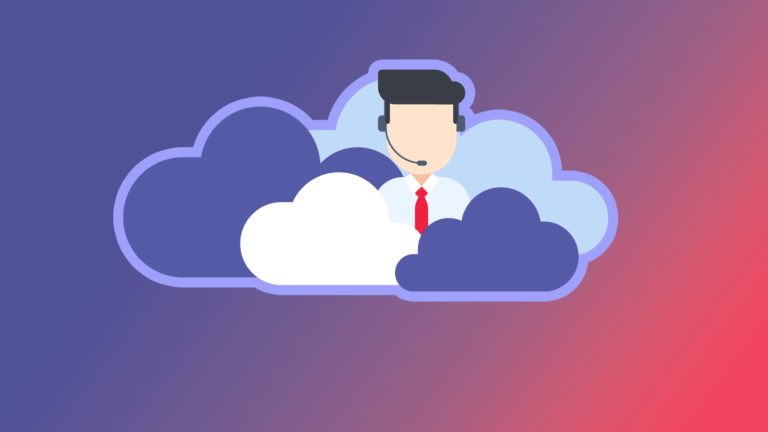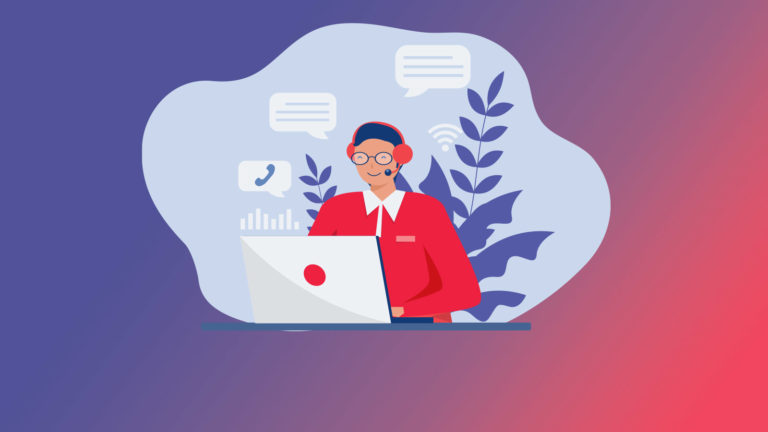[vc_row][vc_column][vc_column_text]In the contact center industry, delivering the best possible customer experience is key. Providing a great customer experience, especially in the digital age, provides a competitive advantage for your business. Exceptional customer experience on various digital communication channels is crucial to any company’s business strategy and is a great way to build customer loyalty and attract new clientele in today’s digital world.
Voice Call Center Software
Historically, call centers were voice-only inbound and outbound operations for sales and customer service. They were deployed on-premises using private branch exchange (PBX) equipment. This was a large investment in technology and an inbound IT team managed and maintained the call center software in-house.
PBX systems then began to support Voice over IP (VoIP) and call center software was created to include automatic call distributor (ACD) functionality to distribute incoming calls to the representatives. An additional call center software feature called interactive voice response (IVR) was created to automate some of the agents’ calls through self-service by allowing callers to enter numbers by touch-tone (e.g., “Press 1 for English”) on their phone’s dial pad.
At this time, voice was the primary channel for speaking with customers and prospective customers, and the call center was split into two sections: inbound calls and outbound calls. Outbound calls are primarily sales-related calls, whereas inbound calls are typically customer service calls and new sales calls coming into the call center—think direct response TV advertisements where customers will call the number on the screen.
Technology Used in Call Centers
Outbound Call Center Software Features
Call Center phone systems feature four different types of outbound dialing modes. Manual mode allows agents to call numbers in an outbound list manually. In preview dialing mode, the agents are provided a list of calling records in the campaign and can preview the record before dialing manually. This process can be automated further in progressive mode and predictive mode. With progressive and predictive dialing campaigns, the software automatically dials the numbers in the list for the agent, monitors the call progress, and connects the agent if the call is answered.
Outbound call center software also includes extensive list sorting and filtering (complete with drag-and-drop functionality), call scheduling during optimal calling hours, automatic verification with right party contact, dynamic caller ID assignment, and accurate call progress analysis and answering machine detection.
Inbound Call Center Software Features
Arguably, the most important feature for inbound calls is the automatic call distributor (ACD), which is the routing engine that gets the incoming calls to the appropriate agent. The ACD can automatically route the call to the correct agent based on a combination of interaction properties, agent properties, and rules. For example, if a call center handles different languages, skills-based routing can be set up to deliver Spanish-speaking callers to agents proficient in speaking Spanish, and French-speaking customers to French-speaking agents. In addition, companies can set rules around the type of interaction or status of the caller. Priority routing can be set up for “gold customers,” for example. Tracking customer service calls is also easy with call center reporting and analytics, including real-time agent and supervisor dashboards and wallboards.
Automatic customer relationship management (CRM) screen pops are also a must-have feature for inbound call centers. Most midsize and enterprise companies integrate their call center software with their preferred CRM. For example, a company with Zendesk for their CRM would integrate their contact center software with Zendesk to help agents seamlessly access caller information via screen pops, which automatically “pop” customer data, such as contact information, to the agent’s screen upon accepting the call. CRM integration provides agents with single sign-on, data-driven interaction routing, activity history, click-to-call functions, and the often-requested screen pops.
Inbound call center software also includes full call control from the agent’s browser, call transcription, dropped call conversation continuity, virtual queue with callback options, and pre-recorded message playback.
Omnichannel Call Center Software
The biggest change in the call center industry has been in the way customers want to communicate with their favorite brands. As consumers have become more mobile, they have adjusted the way they talk to family and friends by using new media channels like text messaging, social media, and messengers. In the same way, they also want to be able to reach out to companies on a variety of channels, not just traditional channels like voice or email. Millennials and younger generations grew up on these channels, and as they became consumers, companies needed to support this shift. This change in communication style led companies to consider whether they should implement contact centers software versus voice-only call centers software and multichannel software or omnichannel software.
Multichannel contact centers offer additional channels on top of inbound and outbound voice, but these channels remain siloed. In a multichannel system, customers can communicate through all available channels but agents are segmented in the contact center by channels. Switching between channels can be frustrating for customers because they are required to repeat information to a different agent.
Omnichannel contact center software brings together all channels into a single unified system. Agents can handle more than one type of interaction at a time and customers can easily move between channels. For example, if a customer starts on a web chat but wants to speed up the conversation, he or she can seamlessly escalate the chat to a voice call with the same agent. This seamless transition from chat bot to live chat is made possible with a contact center solution with omnichannel capabilities.
Call Center Software by Company Size
Enterprise-Level Call Center Software Functionality
Enterprises require mature call center software with enterprise-grade features and functionality.
What makes a call center solution enterprise-grade?
-
-
- High Availability and Reliability—Availability refers to the amount of time the software is in functioning condition. For example, when some vendors do software upgrades, they experience planned downtime where users are unable to log in and use the software. Reliability is the combination of highly available and redundant systems, where components or system functions are duplicated for failure or backup purposes. Highly available and reliable software ensures that users and customers can access the software even if there is a disaster. Enterprise software allows constant customer communications with advanced microservice architecture and disaster recovery.
- Scalability—Enterprises need the ability to scale their contact center to thousands of concurrent users to support uninterrupted growth.
- Compliance—Security for PCI, TCPA, and HIPAA is necessary for most larger contact centers that process credit cards, work with sensitive information, or do outbound sales campaigns.
- Security—Network security and data protection are a must for enterprise customer communications. Large corporations have mountains of customer data, so it is important to have strong security options within the software
-
Small businesses can also utilize call center software. With the emergence of cloud-based contact center technology, it has never been easier or more cost-effective for small to midsize businesses (SMBs) to deploy and manage call center software as feature-rich as enterprise contact centers.
What Technology Should a Modern Contact Center Platform Have?
In the modern-day, a contact center platform should be flexible while allowing customers and agents to interact on any emerging digital channel. Especially after the COVID-19 pandemic that forced many contact centers to switch to remote operations, many in the contact center industry are seeing the value in becoming more flexible and are adapting to these new and emerging channels. Many advanced features are available to contact centers enabling them to provide a superior customer experience while boosting agent productivity and customer satisfaction.
Artificial Intelligence
Artificial intelligence can help boost agent performance by assisting contact center agents while improving efficiency by automating many routing tasks. AI can perform functions such as omnichannel quality management, real-time agent assistance through response suggestions, and quality management through real-time analytics and sentiment analysis.
Omnichannel Quality Management
Another feature that a modern contact center platform should have is built-in omnichannel quality management. Quality management ensures that your contact center agents are meeting standards, and allows you to see whether or not your contact center is fulfilling important KPIs and metrics. By incorporating omnichannel into quality management, your administrators can look at agent performance and customer interaction quality on 100% of interactions on all channels. With accurate information and real-time reports, you can intervene in negative interactions at the right time and ensure best practices are being implemented for superior customer experiences.
CRM Integrations
Last, but not least, ensure that your contact center platform can integrate with any third-party CRM. CRM software integration is crucial in following the customer journey at every step. With CRM integrations, you can see the entire history of a customer interaction through historical reports, and personalize the customer interaction. Bright Pattern’s contact center platform, for instance, can integrate with CRMs like Salesforce, Microsoft Dynamics, Zendesk, and Oracle Service Cloud to deliver personalized customer experiences. Or, Bright Pattern’s platform can integrate with your existing system of records in case your business relies on an in-house, natively built record management system.
[/vc_column_text][/vc_column][/vc_row]




